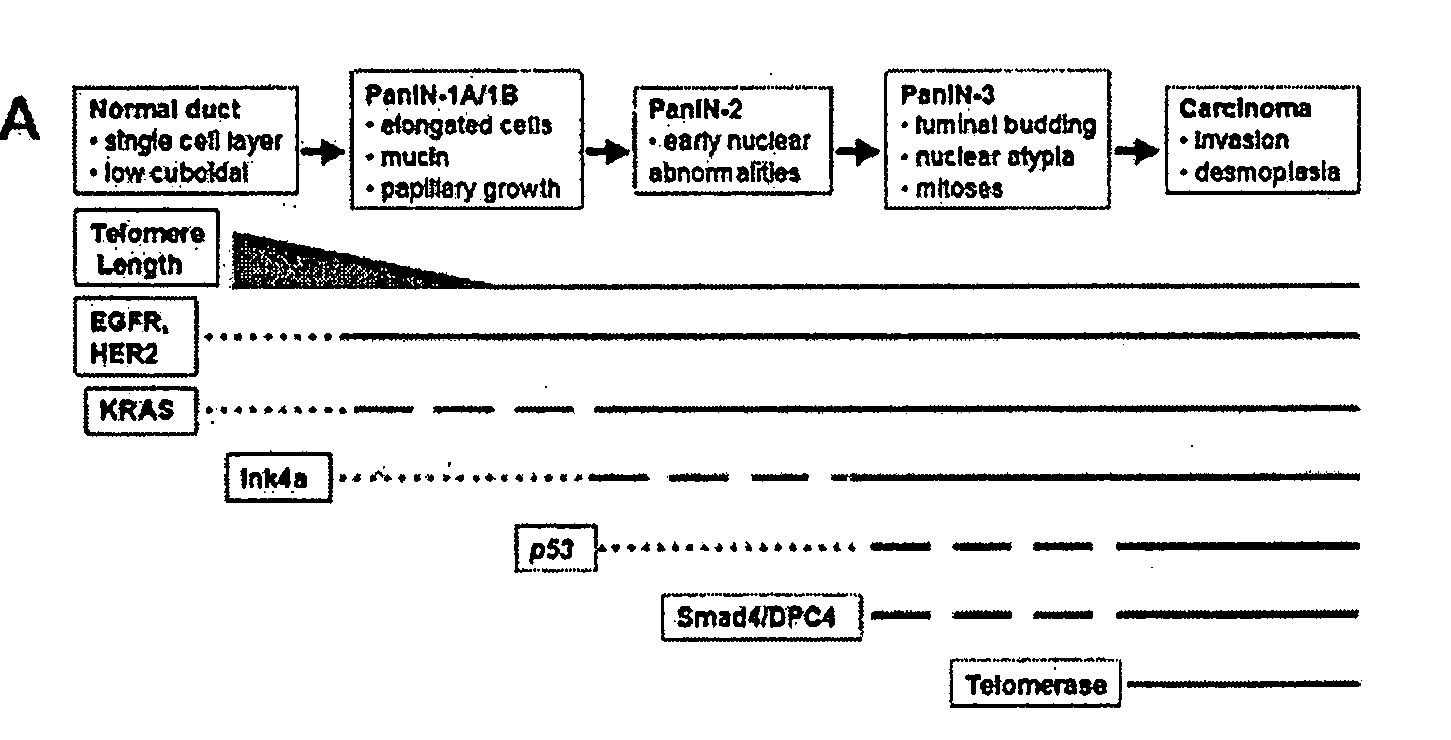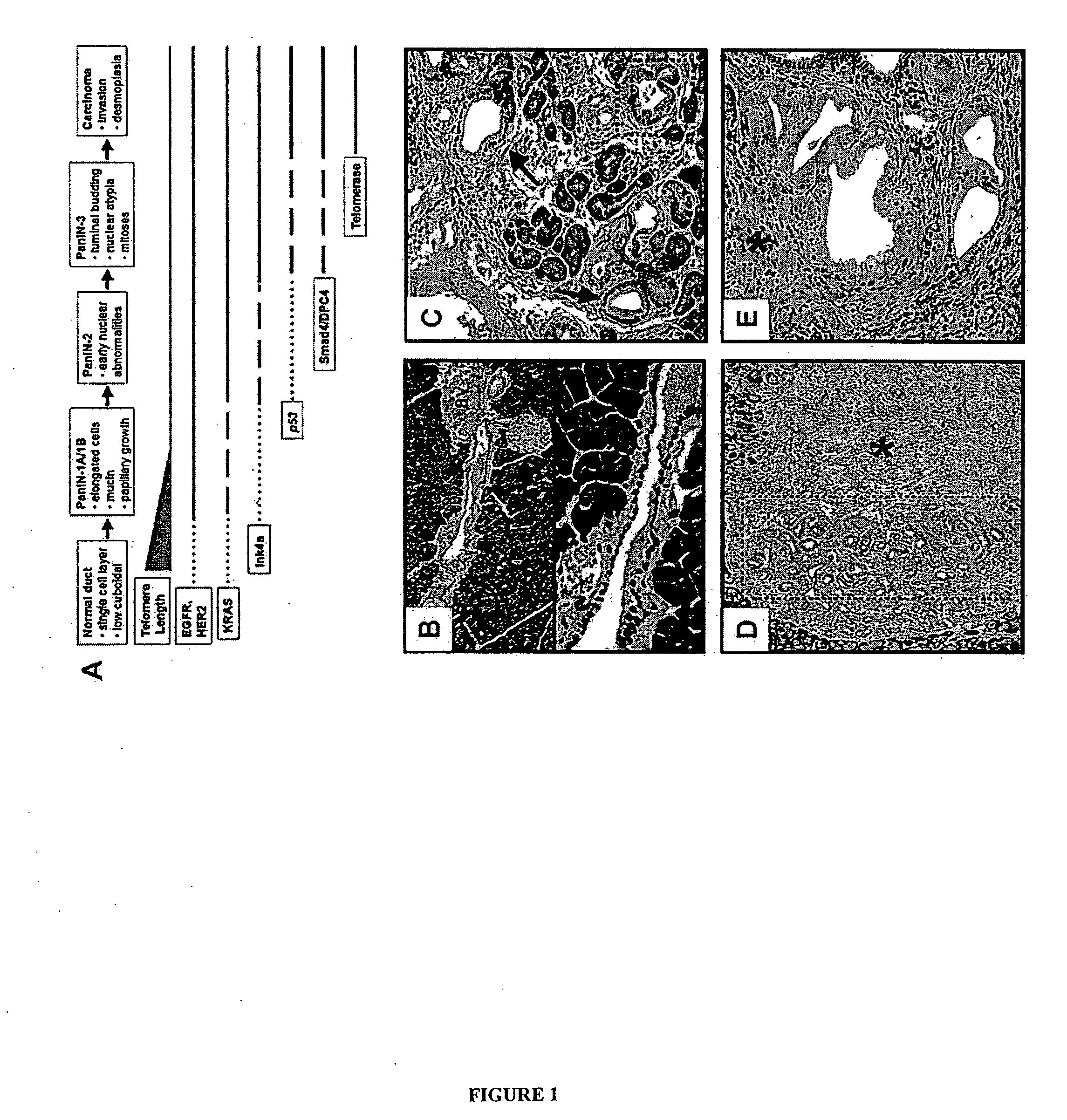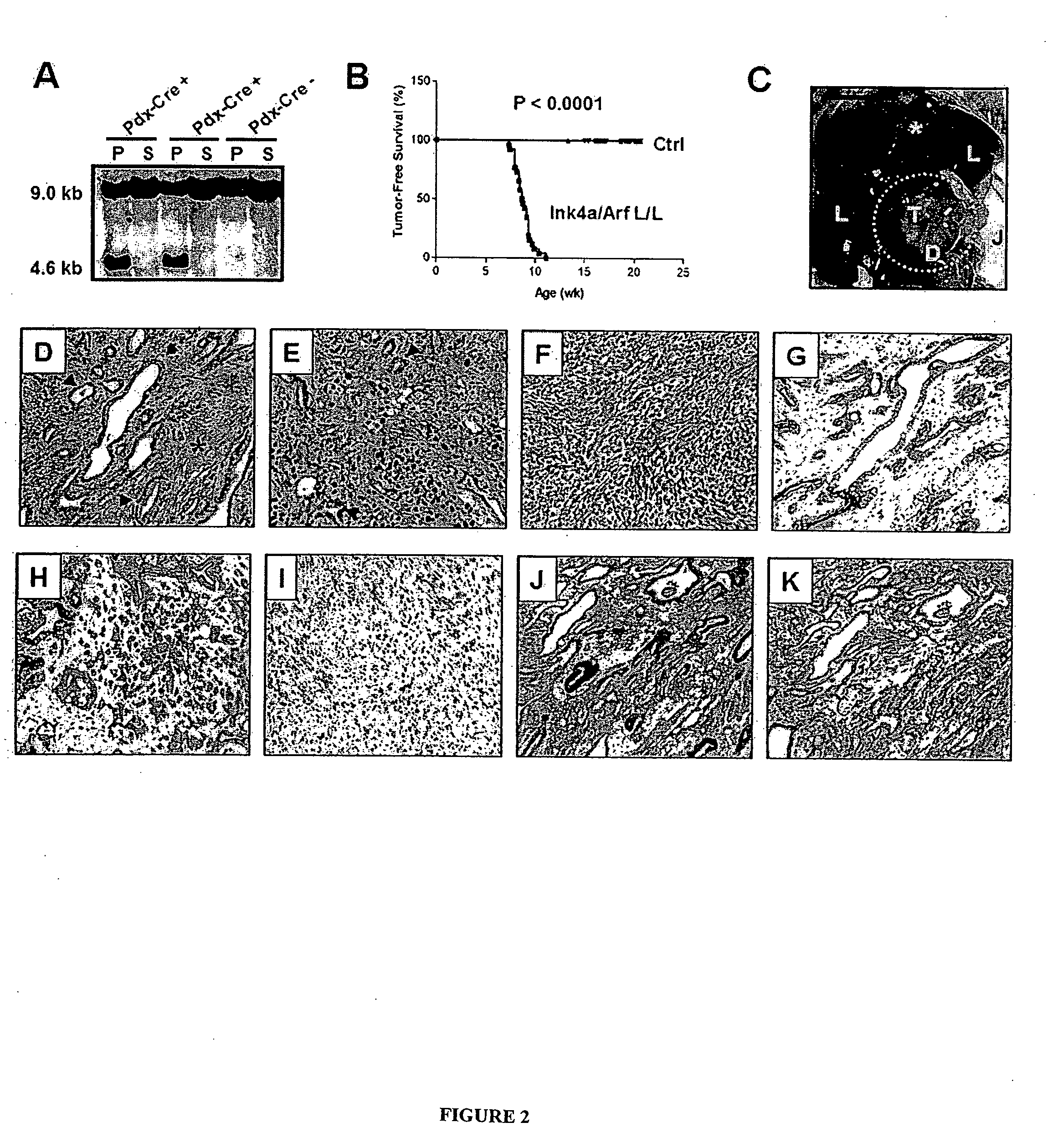Animal models of pancreatic adenocarcinoma and uses therefor
a technology of pancreatic adenocarcinoma and animal models, which is applied in the field of animal models of pancreatic adenocarcinoma and uses therefor, can solve the problems of poor prognosis, unable to accurately engineer such mutations or pathway alterations into a accurate model, and numerous previous modeling attempts have failed to recapitulate the human disease at all levels
- Summary
- Abstract
- Description
- Claims
- Application Information
AI Technical Summary
Benefits of technology
Problems solved by technology
Method used
Image
Examples
example 1
Generation of a Mouse Model of Pancreatic Adenocarcinoma
A. Materials and Methods
[0442]Engineering of the Conditional Ink4a / Arf Mouse Strain
[0443]The Ink4a / Arf locus was subcloned into the pKOII targeting vector that carried a negative selection marker for diptheria toxin (DT), a positive selection marker for neomycin acetyltransferase (Neo), Frt sites and loxP sites (FIG. 7). Embryonic stem (ES) cells were electroporated and selected by standard techniques. Clones were screened by Southern analysis using the PstI restriction enzyme and a 3′ fragment external to the targeting construct (FIG. 7). Blastocyst injections were carried out with targeted clones, and transmitting chimeric mice were bred to CAGG-Flpe and transgenic mice to generate the Ink4a / Arf lox allele. These mice were bred onto an FVB / n background (backcrossed 4 generations). Mice were genotyped by Southern analysis and multiplex PCR (primers and conditions are available on request). For functional tests of the allele, t...
example 2
Biomarker Discovery Utilizing Animal Models of Pancreatic Adenocarcinoma
[0470]Having established the histologic and clinically validity of the animal models of the invention, the applicability of these models for the identification of pancreatic cancer specific serum biomarkers was addressed. In addition, to the comprehensively identification of stage-specific biomarkers for pancreatic adenocarcinoma, biomarkers that are specific for particular genetic lesions, including loss of function of Smad4, p53, Ink4a, Arf, and Lkb1 were developed, e.g., Pdx1-Cre; LSL-KrasG12D; Ink4alox / lox; Pdx1-Cre; LSL-KrasG12D; p53lox / lox; Pdx1-Cre; LSL-KrasG12D; SMAD4lox / lox. These biomarkers will serve to allow the development of highly sensitive, rapid and cost-effective screening methods for detection of early stage disease in clinically asymptomatic subjects as well as for diagnosis of various stages of pancreatic cancer. A non-invasive test involving serum analysis allows the rapid evaluation of sub...
example 3
Biomarker Discovery Utilizing Animal Models of Pancreatic Adenocarcinoma
[0475]Human solid tumors often undergo extensive chromosomal rearrangements and display marked cytogenetic abnormalities, including amplifications and deletions, leading to gain or loss of normal chromosomal material and translocations, or abnormal fusions between two different chromosomes, leading to the production of novel chimeric proteins. This process of “genomic instability” occurs through disruption of the molecular mechanisms governing the integrity of a cell's chromosomal material and the resultant cytogenetic aberrations are thought to contribute to the pathogenesis of malignant neoplasms.
[0476]Genomic instability is a hallmark feature of pancreatic adenocarcinoma and numerous cytogenetic studies of human tumor specimens have indicated a profound number of recurrent amplifications and deletions within the pancreatic cancer genome. While these genetic lesions point to the existence of many potentially n...
PUM
| Property | Measurement | Unit |
|---|---|---|
| Size | aaaaa | aaaaa |
| Length | aaaaa | aaaaa |
| Time | aaaaa | aaaaa |
Abstract
Description
Claims
Application Information
 Login to View More
Login to View More - R&D
- Intellectual Property
- Life Sciences
- Materials
- Tech Scout
- Unparalleled Data Quality
- Higher Quality Content
- 60% Fewer Hallucinations
Browse by: Latest US Patents, China's latest patents, Technical Efficacy Thesaurus, Application Domain, Technology Topic, Popular Technical Reports.
© 2025 PatSnap. All rights reserved.Legal|Privacy policy|Modern Slavery Act Transparency Statement|Sitemap|About US| Contact US: help@patsnap.com



